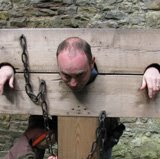- The primary things I look for are a thorough understanding of a company's current technology state and a roadmap of their future. I then fill in the building blocks to paint a picture of the company and its structure via the next 4 areas.
- Staffing: The company should have a proper ratio of dedicated to outsourced staff. The focus for in-house staff should be on owning and extending the company's value-add. The focus of the outsourced staff / service should be on areas where technology is available at a reasonable price.
- Infrastructure and Architectural: I look for alignment between the infrastructure in place and their roadmap. I try to understand their architecture, i.e., have they designed something that will be stable, yet scale and grow as their business requires? Have they over or under built, are their investments proper for current state and extensible as their growth requires?
- Workflow and Processes: This is usually the hardest part of my interviews with startups because while most have ways they do things, they often aren't comfortable expressing them. They also aren't normally done in a way that's repeatable to the point where they could be called a workflow. This is OK. As they mature, standardized workflows and processes will be established, normally out of a necessity to ensure they're providing a stable environment that doesn't get negatively affected as they introduce change.
- Costs: This is the spreadsheet part of the conversations. What has been spent to get them to the point they're at, what do they need to spend near term, possibly with funding from my company, and what do they envision they'll need to spend? I look for a grounded approach to spending.
With a little flipping around these consideration probably apply just as well to museums.

No comments:
Post a Comment